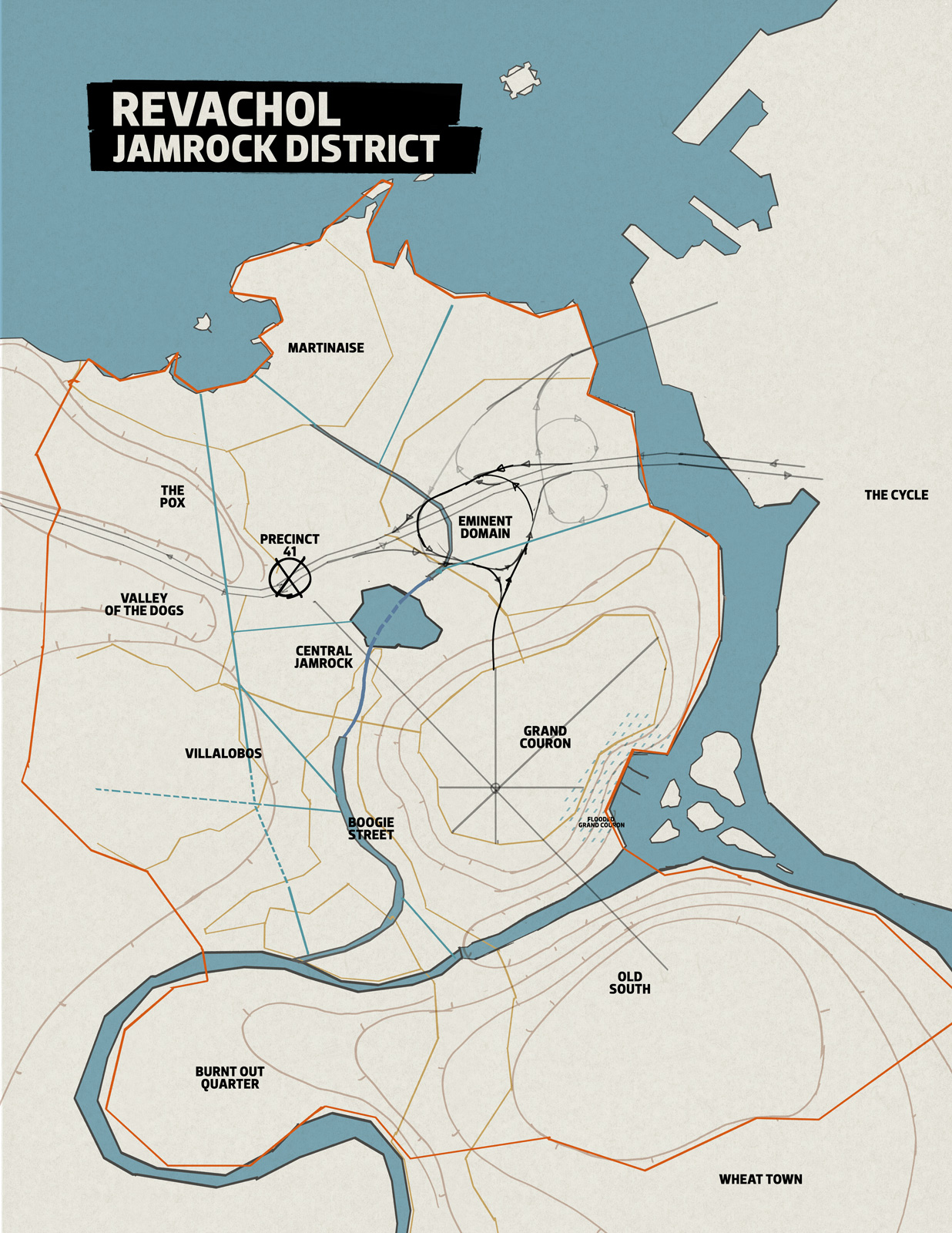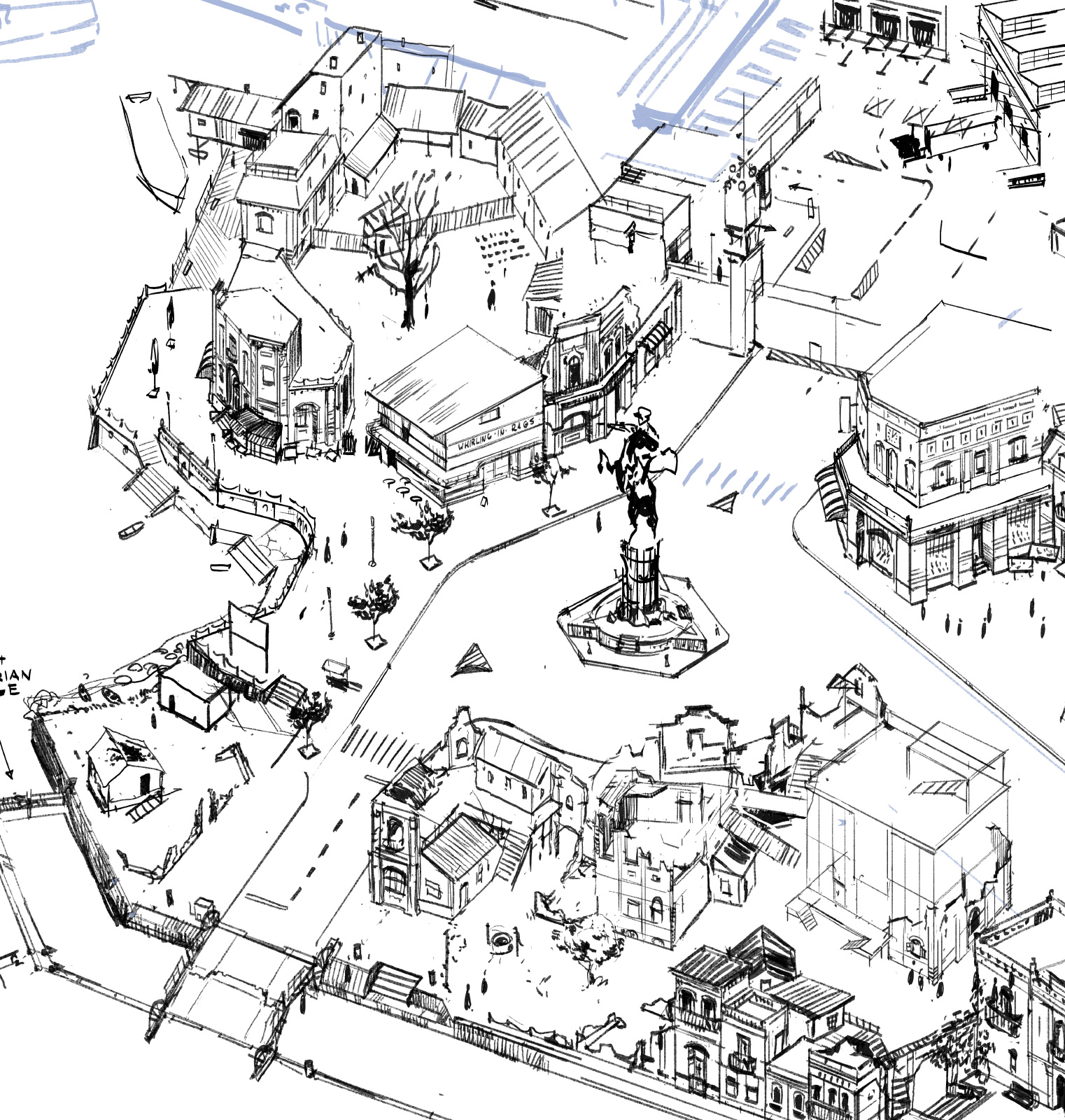So the game takes place in the “bad part of the bad part of town” of the city of Revachol. The district you police is called Jamrock (“in honour of the island nation of Jamaica” nonetheless - or so I’m told by the boys in worldbuilding). More specifically, the neighbourhood “No Truce” takes place in is a coastal fraction of Jamrock called Martinaise. The city has been built and rebuilt across a span of four hundred years and the architectural styles present reflect that. We’re pedantic with how history works, in regards to the layers of technology and culture piling on top of each other. There are also modern cultural aspects that shape what different neighbourhoods look like. Immigrants from different parts of the world etc.

The game’s worldbuilding at large has places like Boogie Street, a street come ghetto of Semenine immigrants, whose abstract wood architecture and innovative techno music is poised to ride an invasive wave of pop culture to a civ style cultural victory. (Yes, really). There is Villalobos, the part of town populated by Mesque immigrants whose youth are essentially latino gangbangers in mesh wifebeaters. The neighborhood itself is a byzanthian labyrinth of housing that’s claimed the streets underneath; where one is never quite sure if you’re indoors or outside. Imagine a dungeon-district! An RPG city district that doubles as an ongoing dungeon, phasing from hidden street to meth-lab to salsa party.
Blam, you stepped into the wrong room motherfucker - salsa party!
Hope you brought your maracas!
Be armed to the teeth with maracas when you come to the… okay I’ll stop now.
Eminent Domain is a neighbourhood of old workers’ barracks being torn down to make room for a massive elevated motorway interchange. Locals build up against the pillars of the motorway and nix electricity from the high voltage powerlines.

Martinaise however is a coastal area. Here our “atmospheric target render” (another expression from the boys in worldbuilding) is encapsulated in the sentence: “I’ll wake up in a new life, shift shape and shoe shine.
Damn it all to do now, down by the seaside…”
Imagine old pre-revolution military pride dilapidating aside modern misery, while “On The Waterfront” style harbour work goes on in the background. The coast is marked by old Havanaesque architecture now in disrepair, large swathes of which have been demolished to make room for the ever expanding Greater Metropolitan Port of Revachol, which under coalition governance has grown into the world’s largest industrial harbour. Martinaise is where the revolution was ultimately lost. It is on these coasts that coalition forces landed to quell the uprising and it has the mortar scars to prove it. War damage is still apparent on most houses and locals have used the sturdier bits of ruin to support new, decidedly less baroque buildings. The era of Philipppe III The Squanderer (heir of Philip II The Misuser and Catherine The Lavish) is over, even if his ludicrous mounted likeness in bronze somehow survived. You see, among many, many other things, Philippe III also got prodigal with military regalia. It was “one repulsive laugh after the other” with Phillippe.
Then the Turn-Of-The-Century Revolution came and wiped it all away. Today the equestrian monument is mostly seen by dockworkers and truck drivers.


